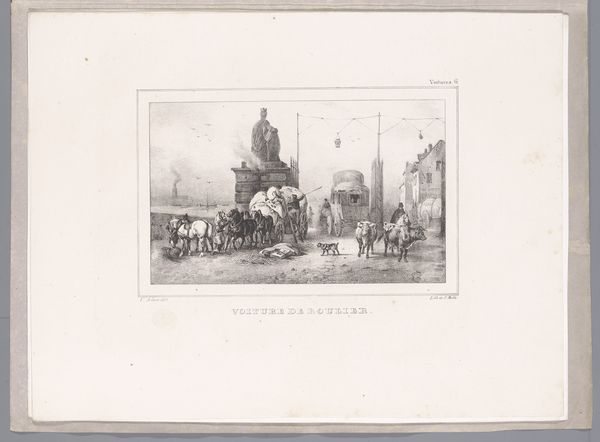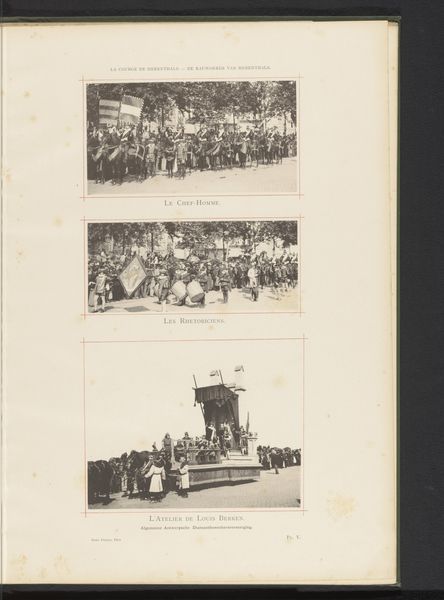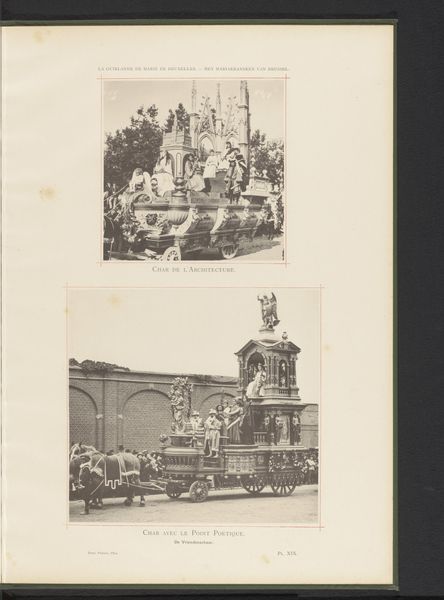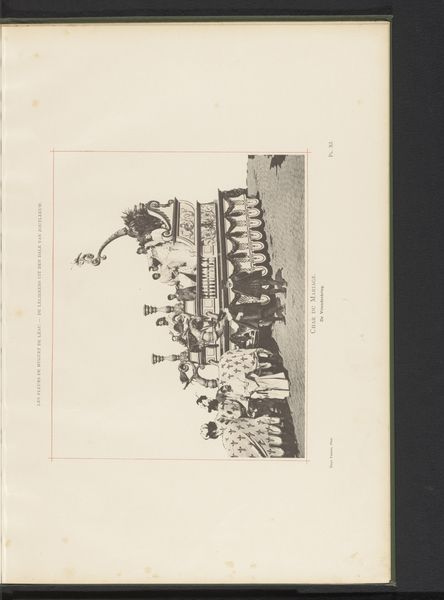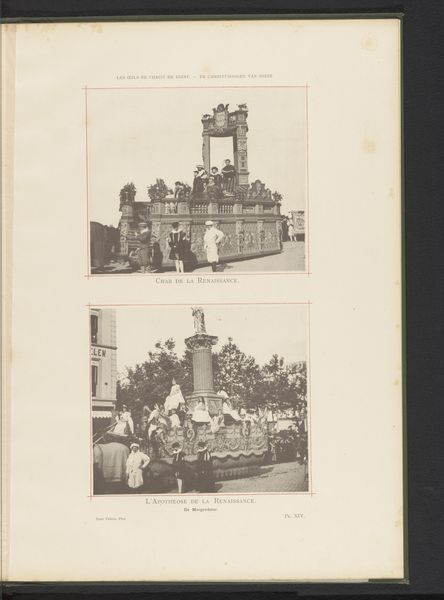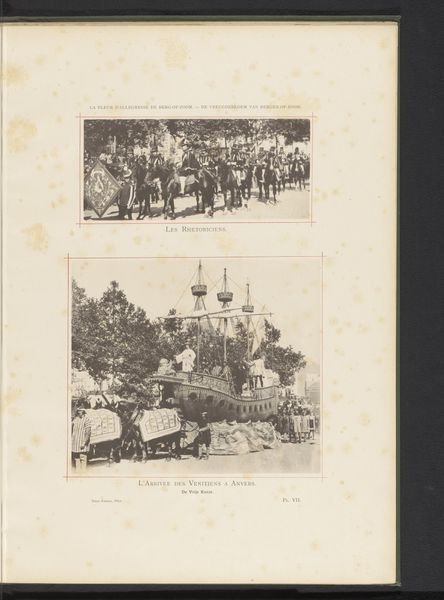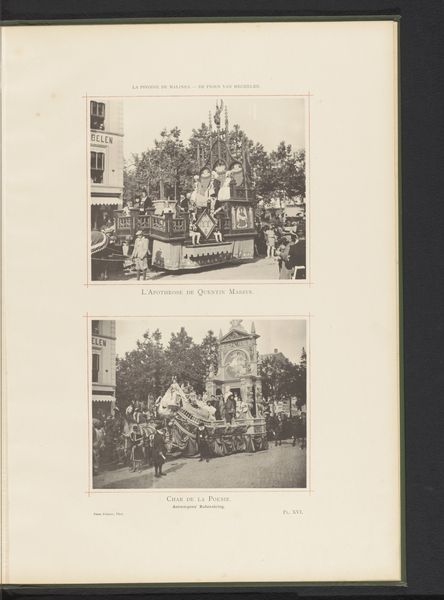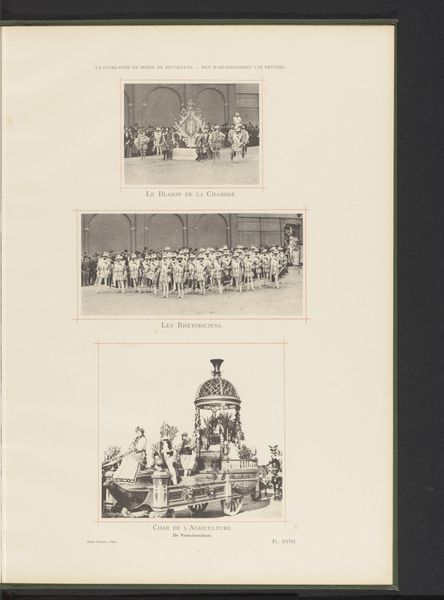
Twee gezichten op de optocht van Landjuweel ter ere van het vijftigjarig bestaan van de Academie d'Archéologie de Belgique in 1892 in Antwerpen 1892
0:00
0:00
print, etching, photography
#
16_19th-century
# print
#
etching
#
landscape
#
photography
#
cityscape
#
academic-art
#
realism
Dimensions: height 495 mm, width 352 mm
Copyright: Rijks Museum: Open Domain
Editor: This print by Frères Dero, titled "Two views of the Landjuweel procession in honor of the fiftieth anniversary of the Académie d'Archéologie de Belgique in 1892 in Antwerp", features two photographic etching studies, capturing different vignettes of what seems to be a historical re-enactment. It feels celebratory, but also a little staged, perhaps idealized. How do you interpret this work? Curator: The photographic documentation is certainly key here. Consider the date: 1892. Photography was becoming increasingly accessible, allowing for wider dissemination of events and ideas. This print captures a moment of civic pride, celebrating the Belgian academy. But it also serves as a carefully constructed narrative. Note how the composition in both images emphasizes order and hierarchy. Editor: Yes, the processions look highly organised. In the lower image especially, "Minerva Protects Art and Peace against Mars", the classical allegory suggests a deliberate connection to historical narratives of power and culture. Curator: Precisely. And consider the context of late 19th-century Europe. The rise of nationalism, imperialism, and burgeoning social movements created anxieties around national identity. These images present a vision of Belgian society that is rooted in tradition and scholarship, but also assertive in its cultural aspirations. What do you notice about who is *not* represented? Editor: That's a good point. It seems that it is carefully excluding a segment of society, maybe those considered undesirable. This photograph promotes a particular class and political view. Curator: Indeed! By framing the past in such a manner, the artists participates in constructing an ideological vision of the present and the future. What we see – or rather, what we are *shown* – says so much about what is considered worthy of remembering. Editor: It's fascinating to think about how photographs, even ones that seem to simply document an event, are actively shaping our understanding of history. Curator: Exactly. We've touched on some of the nuances embedded in this photograph and considered the layers of meaning and political intentions captured in the study of this print.
Comments
No comments
Be the first to comment and join the conversation on the ultimate creative platform.

